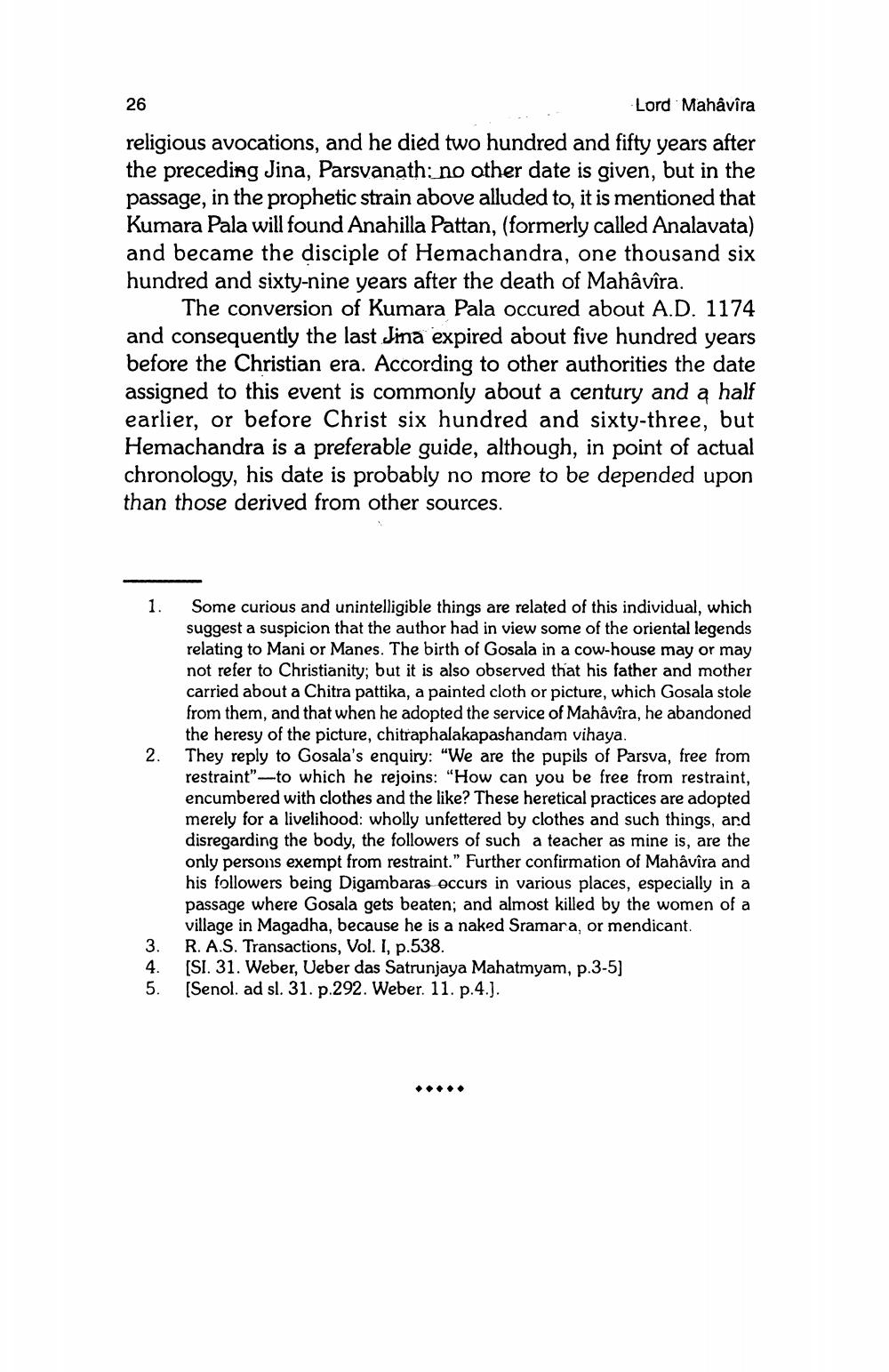________________
26
Lord Mahavira religious avocations, and he died two hundred and fifty years after the preceding Jina, Parsvanath: no other date is given, but in the passage, in the prophetic strain above alluded to, it is mentioned that Kumara Pala will found Anahilla Pattan, (formerly called Analavata) and became the disciple of Hemachandra, one thousand six hundred and sixty-nine years after the death of Mahâvîra.
The conversion of Kumara Pala occured about A.D. 1174 and consequently the last Jina expired about five hundred years before the Christian era. According to other authorities the date assigned to this event is commonly about a century and a half earlier, or before Christ six hundred and sixty-three, but Hemachandra is a preferable guide, although, in point of actual chronology, his date is probably no more to be depended upon than those derived from other sources.
2.
Some curious and unintelligible things are related of this individual, which suggest a suspicion that the author had in view some of the oriental legends relating to Mani or Manes. The birth of Gosala in a cow-house may or may not refer to Christianity; but it is also observed that his father and mother carried about a Chitra pattika, a painted cloth or picture, which Gosala stole from them, and that when he adopted the service of Mahâvîra, he abandoned the heresy of the picture, chitraphalakapashandam vihaya. They reply to Gosala's enquiry: "We are the pupils of Parsva, free from restraint"-to which he rejoins: "How can you be free from restraint, encumbered with clothes and the like? These heretical practices are adopted merely for a livelihood: wholly unfettered by clothes and such things, and disregarding the body, the followers of such a teacher as mine is, are the only persons exempt from restraint." Further confirmation of Mahavira and his followers being Digambaras eccurs in various places, especially in a passage where Gosala gets beaten; and almost killed by the women of a village in Magadha, because he is a naked Sramara, or mendicant. R. A.S. Transactions, Vol. I, p.538. [SI. 31. Weber, Veber das Satrunjaya Mahatmyam, p.3-5) (Senol. ad sl. 31. p.292. Weber. 11. p.4.).
5.




